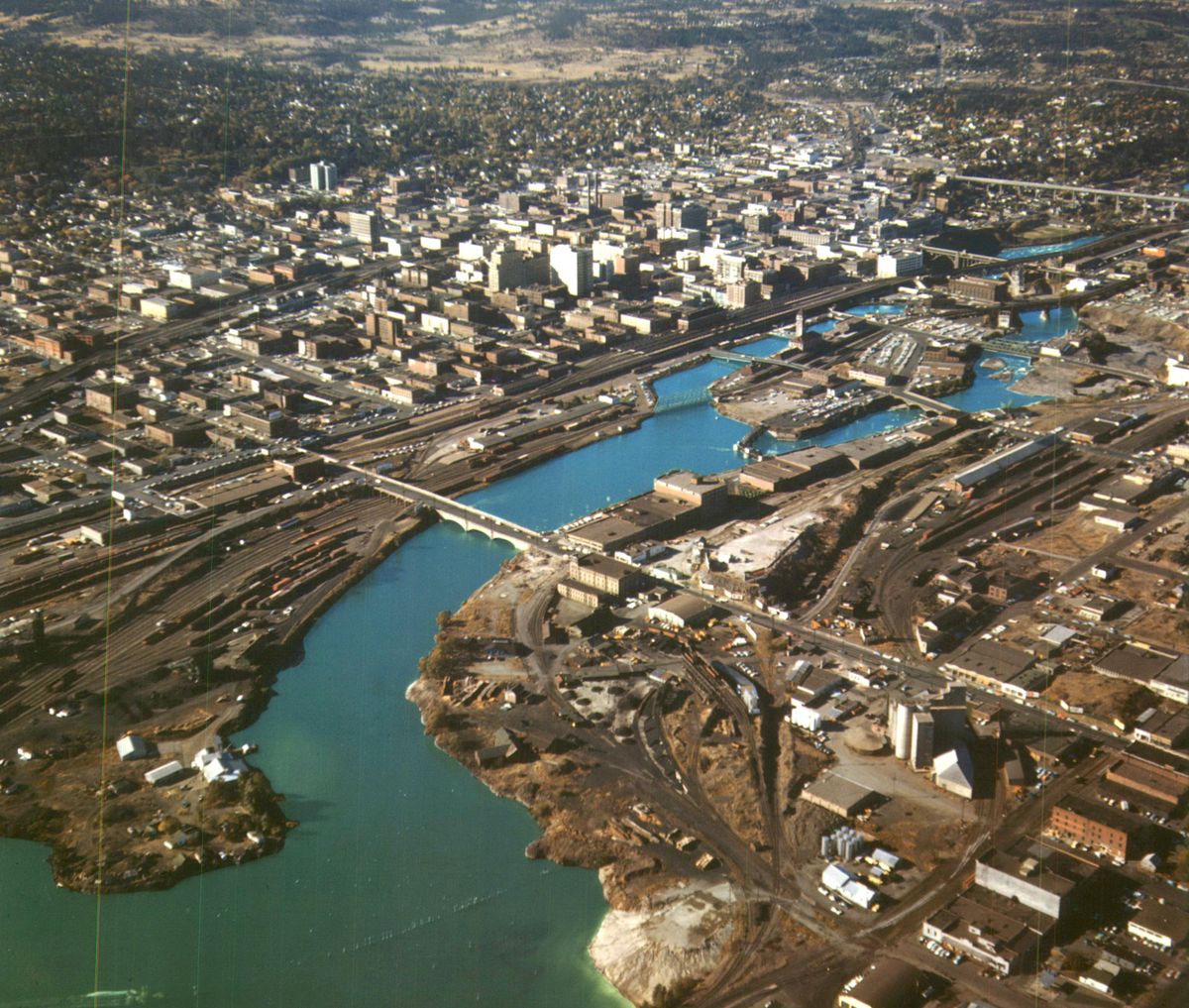Then and Now: The Spokane River

The Spokane River connects Idaho and Washington, Natives and white settlers, and a variety of landscapes and ecosystems.
The Spokane, flowing 111 miles to the mighty Columbia River, empties Lake Coeur d’Alene in Idaho, flows past several village sites once used by the Indian tribes of the region as seasonal fishing and gathering camps. Traditionally, the Coeur d’Alene and Spokane tribes would return to the encampments each year.
Once settlement began in earnest, and especially after the arrival of the Northern Pacific Railroad in 1882, dams were built to power mills and electric generators, but the dams also stopped the salmon from getting upstream to their spawning grounds. With several massive dams now in place, the salmon are gone. But along its length, rainbow trout, kokanee, walleye, perch, smallmouth bass and other native and non-native species can be found by diligent fishermen. Runoff with heavy metals, sent to Lake Coeur d’Alene by Silver Valley mining activity, compromises the health of some fish species.
At one time, raw human sewage went straight into the river, but since the late 1950s, the Riverside Park Water Reclamation Facility has been in place to handle the 34 million gallons of wastewater it now receives daily. Treated water, meeting state and federal standards, is released back into the river. Spokane County has a smaller facility in east Spokane. A series of large tanks being built around the city will help control phosphorus, PCBs and other substances found in stormwater that are harmful to the river.
The landscape around the falls has also been affected by the hand of man. Where natives once fished for salmon, white settlers erected timber and grain mills, laundries and waterworks. In 1890, Washington Water Power, now Avista Utilities, built an 18-foot-high spillway at the lower falls to create the water reservoir for the downtown generation plant. The thunderous sound in times of heavy runoff draws people to Huntington Park to feel the spray and power of the water.
In recent years, people have been enjoying the urban part of the river with nonmotorized travel between Upriver Dam and the Division Street bridge, aided by new access points like the McKinstry building and the Division Street bridge.